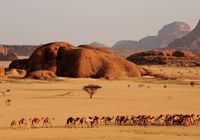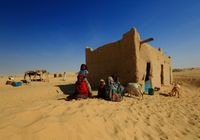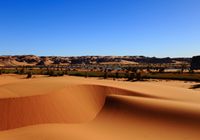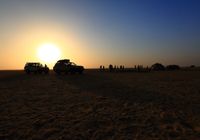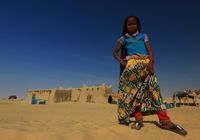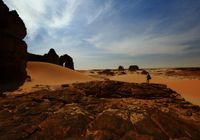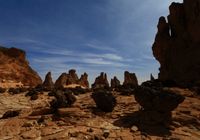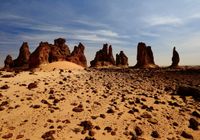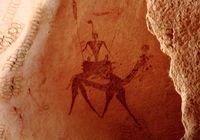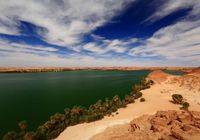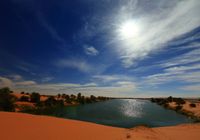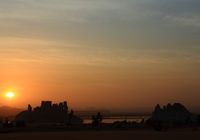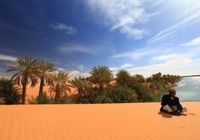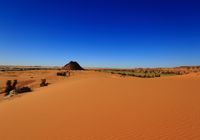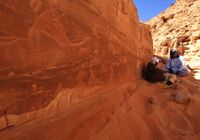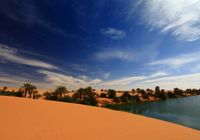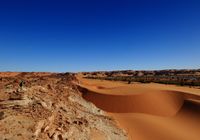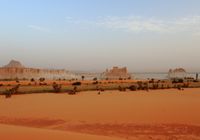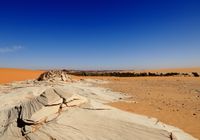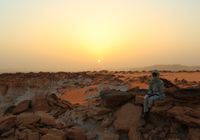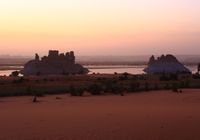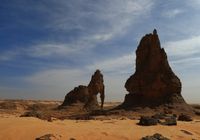The Ennedi plateau, located in north-eastern Chad, in the Ennedi region, is a huge sandstone bastion in the Sahara. It is considered one of the most remote regions of the planet, close to the borders with Libya and Sudan and surrounded by sand everywhere, that invades the deep canyons that cross it, and that only dare to cross the caravans of dromedaries. The massif was declared together with the oasis of the lakes Ounianga World Heritage Site very recently.
The whole region is formed by arches and stone pillars of great dimensions. Here is one of the largest stone arches in the world, the Arch of Aloba, which is 120 meters high and has a width of 77 meters. In the deepest places are depressions called Gueltas where there is water permanently. They are the only shelter of flora and fauna that still persists in this place. The most impressive Guelta is the Guelta de Archei, where the towns of Ennedi bring their caravans of dromedaries to drink.
Rock paintings have been found indicating that this area was inhabited during the Holocene, in the fourth millennium a.c. At that time an intense production was carried out that is characterized by the presence of cattle and that it extends until some two thousand years, with the presence of horses and dromedaries. In some places are represented groups of men mounted on horseback or in dromedaries, as in Terkei.
Crossing the spectacular depression of Mourdi, we find a real wonder, the Ounianga Lakes. A series of lakes in the Sahara desert. They are of great beauty thanks to the variety of shapes, sizes and colors due to their chemical compositions. They are a total of 18 lakes, divided into three groups, the salt lakes of Unianga Kebir, Lake Motro and the group Unianga Serir, the lakes of this group are separated by dunes and almost half of its surface is covered by reeds Floating.
Lake Yoa is the largest of the whole with a depth of 27 meters while Lake Téli is the largest of Unianga Serir with only 10 meters deep.
Much of this wonder is inhabited by several ethnicities, one of them is the Tubus, traditionally shepherds and nomads, many have now settled or live as semi-nomads. Their society is based on clans that distribute oases, pastures and wells, These, distributed throughout the territory. They are divided in two subetnias the teda and the daza. Their main cattle are dromedaries but they also carry goats, sheep and donkeys. The Tubus are Melanoafricans, particularly adapted to the most severe desert environmental conditions surpassing to their rivals and ancestral enemies Tuareg. Of slender bodies, the Tubus women are famous for their beauty which motivated that for centuries this town was attacked by the esclavistas to seize the women and to sell them to the harems of the Maghreb.
Ennedi and its oasis Ounianga remain an enigmatic territory and adventure, of extraordinary natural beauty.

